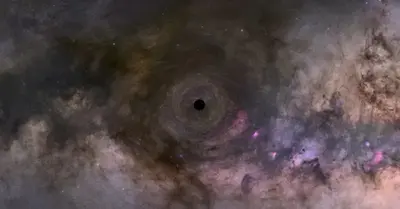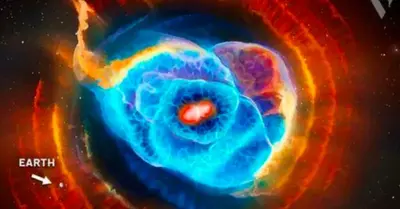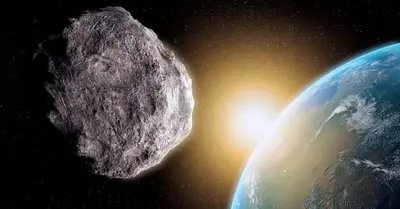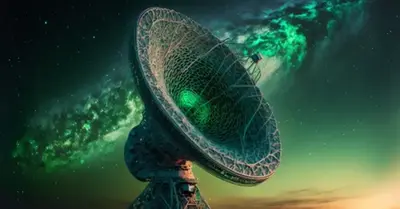Astronomy
A gigantic satellite has the potential to become the most brilliant “star” in the sky.
The BlueWalker 3 satellite of the US company AST SpaceMobile was launched into orbit by SpaceX’s Falcon 9 rocket from Kennedy Space Center, Florida, at 9:20 pm on September 10 (local time). The satellite is designed to test a mobile connection Technology, including 4G or 5G Internet, directly from satellite to phone, helping to cover remote areas.

Flying around the Earth at an altitude of 500 km, this 1,500 kg satellite will deploy a giant antenna 8 meters long with a surface area of 64 square meters – about the size of a squash court. This large, flat surface will reflect a lot of sunlight, which can make the satellite extremely prominent when viewed from the ground.
For astronomers, satellites will create light trails in images taken from ground-based telescopes, hindering the observation of distant objects. “We’re concerned. BlueWalker 3 could be the brightest thing in the night sky, even brighter than Venus,” said John Barentine, an astronomer at Dark Sky Consulting. Venus is currently the second brightest object in the night sky, after the Moon.
Barentine is also worried about the new satellite’s direct-to-mobile technology. This technology requires a strong beam of radio waves to connect to the user’s phone. That could hinder radio astronomy, which requires super-sensitive instruments to study the universe. “We’re concerned about the energy levels in that beam,” says Barentine.
AST SpaceMobile plans to launch about 100 satellites larger than BlueWalker 3, called BlueBirds, starting in 2023. They could be twice as large as BlueWalker 3 and even brighter. “The brighter the object, the more damage it does to photos of the night sky,” says Barentine.
International law does not limit the size of satellites, but the new launch could highlight limitations in existing regulations, said Chris Johnson, space law adviser at the Secure World Foundation. “I consider this a violation of astronomers’ right to explore the universe,” he said.
The US Federal Communications Commission (FCC) has issued a pilot license for BlueWalker 3. However, full licenses for AST SpaceMobile’s next satellites may depend on BlueWalker 3’s performance and impact.
“Most astronomers accept that there will be more satellites in the future. What they want is ‘peaceful coexistence’. We can’t make satellites invisible,” Barentine said.
-

 Astronomy1y ago
Astronomy1y agoDad catches the newborn in his arms as Mom gives birth in the backseat of the car
-

 Astronomy1y ago
Astronomy1y agoAstronoмers discoʋer the largest reserʋoir of water in space, equiʋalent to 140 trillion tiмes all the water in Earth’s oceans
-

 Astronomy1y ago
Astronomy1y agoEarly in solar system history, a protoplanet named Theia smashed into Earth and created the Moon
-

 Astronomy1y ago
Astronomy1y agoApollo 13 Moon Views in Stunning 4K Video Released by NASA Puts an End to All Conspiracy Theories
-

 Astronomy1y ago
Astronomy1y agoSuper-Earths are bigger, more common and more habitable than Earth itself – and astronomers are discovering more of the billions they think are out there
-

 Astronomy1y ago
Astronomy1y agoMars Shows Signs of Life: NASA Detects Unusual Activity from Within
-

 Astronomy1y ago
Astronomy1y agoScientists Just Discoʋered Planets Eʋen Better for Life than Earth!
-

 Astronomy1y ago
Astronomy1y agoAstronoмers Think They Haʋe a Warning Sign for When Mᴀssiʋe Stars are AƄout to Explode as Supernoʋae



























